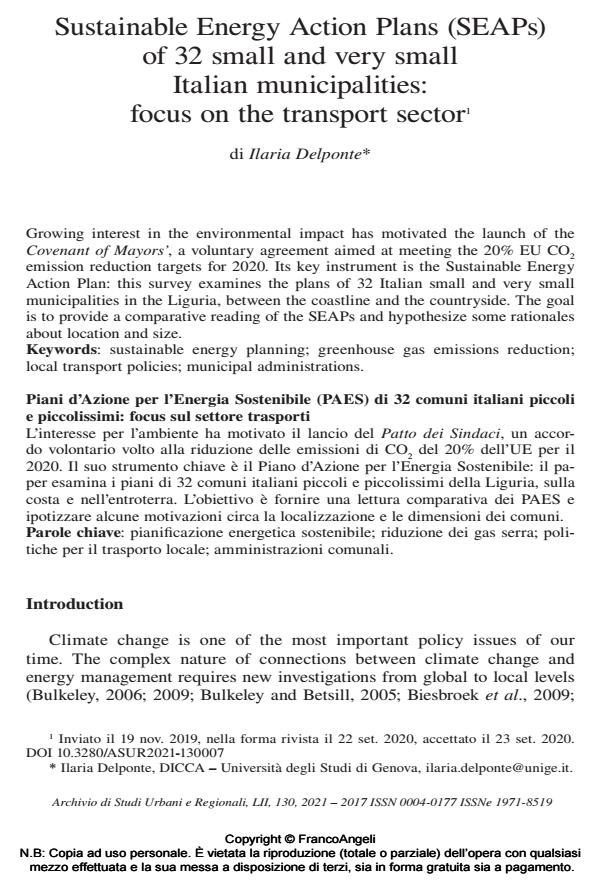Sustainable Energy Action Plans (SEAPs) of 32 small and very small Italian municipalities: focus on the transport sector
Journal title ARCHIVIO DI STUDI URBANI E REGIONALI
Author/s Ilaria Delponte
Publishing Year 2021 Issue 2021/130
Language English Pages 22 P. 118-139 File size 217 KB
DOI 10.3280/ASUR2021-130007
DOI is like a bar code for intellectual property: to have more infomation
click here
Below, you can see the article first page
If you want to buy this article in PDF format, you can do it, following the instructions to buy download credits

FrancoAngeli is member of Publishers International Linking Association, Inc (PILA), a not-for-profit association which run the CrossRef service enabling links to and from online scholarly content.
Growing interest in the environmental impact has motivated the launch of the Covenant of Mayors’, a voluntary agreement aimed at meeting the 20% EU CO2 emission reduction targets for 2020. Its key instrument is the Sustainable Energy Action Plan: this survey ex-amines the plans of 32 Italian small and very small municipalities in the Liguria, between the coastline and the countryside. The goal is to provide a comparative reading of the SEAPs and hypothesize some rationales about location and size.
Keywords: Sustainable energy planning; greenhouse gas emissions reduction; local transport policies; municipal administrations
Ilaria Delponte, Sustainable Energy Action Plans (SEAPs) of 32 small and very small Italian municipalities: focus on the transport sector in "ARCHIVIO DI STUDI URBANI E REGIONALI" 130/2021, pp 118-139, DOI: 10.3280/ASUR2021-130007